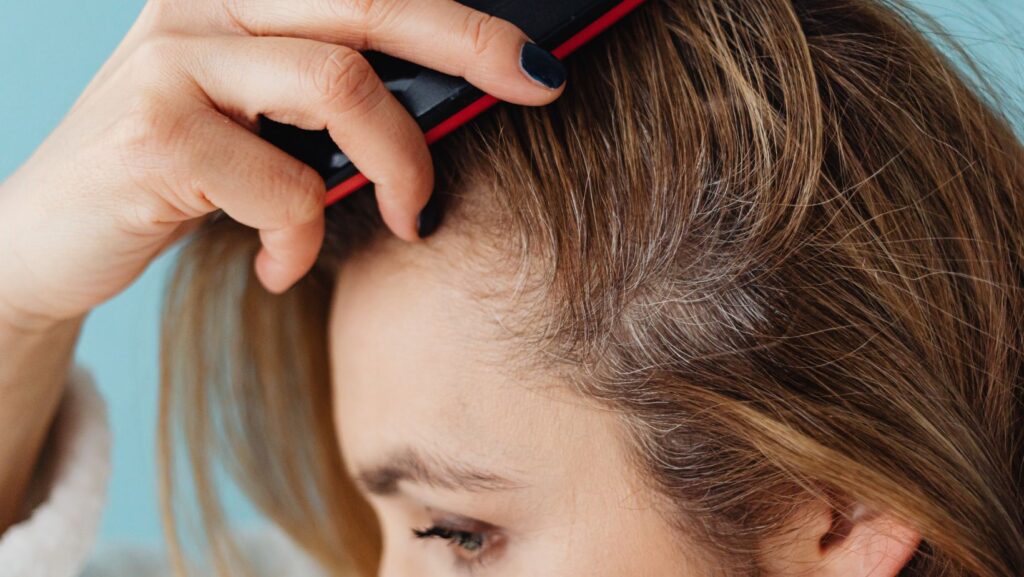
Hair loss is often thought of as a male problem, but millions of women around the world experience it too. Female pattern baldness, known medically as female pattern hair loss (FPHL), affects women of all ages and backgrounds, often causing emotional distress and a loss of confidence. As awareness grows, more women are exploring surgical solutions such as hair transplants. But do they really work for women, and what makes them different from male procedures?
What Is Female Pattern Baldness?
Female pattern baldness is a progressive form of hair loss that causes diffuse thinning across the scalp, particularly along the part line and crown. Unlike men, women usually retain their frontal hairline, but the hair becomes finer and the scalp more visible. The condition is largely genetic and influenced by hormones such as androgens. It often becomes noticeable after menopause, though it can begin earlier in life.
According to dermatological research, around 40 percent of women show visible hair thinning by age 50, and the percentage increases with age. Symptoms typically progress slowly. Many women first notice that their ponytail feels thinner or that their scalp shines through under bright light.
Why Hair Transplants Are More Complex in Women
While hair transplantation has become routine for male pattern baldness, it poses additional challenges for women. Male baldness usually follows predictable patterns, leaving donor areas at the back of the scalp dense and resistant to hair loss. Female pattern baldness tends to be more diffuse, meaning the donor area can also thin over time.
This is why surgeons place strong emphasis on proper evaluation before recommending surgery. The quality and stability of the donor area are key factors in determining whether a woman is a good candidate for transplantation.
How Hair Transplants Work for Women
Hair transplant surgery involves taking healthy follicles from the back or sides of the scalp and implanting them into areas affected by thinning. The most common techniques are:
Follicular Unit Extraction (FUE): Individual follicles are extracted and implanted using small circular punches. This technique leaves minimal scarring and works well for women who prefer not to shave their head.
Follicular Unit Transplantation (FUT): A small strip of scalp is removed, divided into grafts, and implanted in thinning zones. This method can provide more grafts in one session but leaves a fine linear scar.
Direct Hair Implantation (DHI): A pen-like device allows precise placement of follicles, giving surgeons control over angle, direction, and depth for a natural result.
These procedures are performed under local anesthesia and take between four and eight hours depending on the number of grafts. Most women return to normal activities within a few days.
Why Turkey Has Become a Global Hub for Female Hair Restoration
Turkey’s reputation for excellence in cosmetic and hair restoration surgery continues to grow, with Istanbul leading as the main destination. The country attracts over one million hair transplant patients each year due to its blend of advanced techniques, skilled surgeons, and competitive pricing.
Clinics such as Asli Tarcan Clinic in Istanbul specialize in procedures for both men and women, offering personalized approaches to female pattern baldness and Afro-textured hair transplants. Their modern FUE and DHI methods provide natural density while minimizing scarring.
The cost of hair transplant in Turkey generally ranges between 2,000 and 5,000 dollars, which is significantly lower than the 8,000 to 15,000 dollars charged in the United States or the United Kingdom. Many clinics provide comprehensive packages that include hotel stays, airport transfers, and follow-up care.
What Studies Show
Scientific research supports the potential benefits of hair transplantation for women when the right candidates are selected. A 2024 clinical review from South Korea reported that 88 percent of women who underwent transplantation rated their satisfaction above 75 percent. Success rates ranged from 10 to 80 percent, depending on graft quality and the extent of hair loss.
Another study found that patients with 3,000 or more implanted hairs had significantly better coverage and density. Women who received platelet-rich plasma (PRP) as part of the procedure showed improved follicle thickness and faster growth.
In general, regrowth begins three to four months after surgery, and full results become visible within a year.
Who Qualifies for Hair Transplant Surgery
Not every woman with hair loss is a candidate. Surgeons typically recommend transplants only when hair loss is stable and the donor area is healthy. Ideal candidates include women with localized thinning in the crown or frontal area rather than uniform thinning across the scalp.
Conditions such as hormonal imbalances, thyroid disorders, or active shedding should be addressed first. In many cases, doctors begin with medical therapies like minoxidil, finasteride, or spironolactone to stabilize hair loss before considering surgery.
Alternative and Supportive Treatments
While hair transplants can be transformative for some, they are not the first line of treatment. Many women start with non-surgical options such as:
- Topical minoxidil: Proven to stimulate hair growth in about 60 percent of users.
- Platelet-Rich Plasma (PRP) therapy: Uses growth factors from the patient’s blood to enhance follicle strength and density.
- Low-level laser therapy (LLLT): Stimulates scalp circulation and cellular repair.
- Nutritional support: Iron, vitamin D, and protein-rich diets promote healthier hair.
Combining these methods with surgical approaches often yields the best long-term results.
Risks, Side Effects, and Recovery
Like all surgeries, hair transplants carry some risks. Patients may experience temporary swelling, scabbing, or redness during the first week. Mild pain or tenderness usually resolves within a few days. Shock shedding, where some transplanted hair falls out before regrowing, is common and temporary.

Serious complications such as infection or scarring are rare, especially in accredited clinics. Recovery typically takes seven to ten days, and final results appear within twelve months.
Realistic Expectations and Long-Term Outlook
Hair transplants can create impressive and natural-looking results for women with stable hair loss and healthy donor areas. However, they are not suitable for everyone. The goal is often to enhance density rather than achieve a full, youthful volume of hair.
Patients who combine transplants with ongoing medical therapy tend to maintain results longer and enjoy higher satisfaction rates. Studies show that over 85 percent of women who undergo successful transplants report improved self-esteem and overall well-being.












